Greetings my friend and fellow strummers in this month’s column I will discuss that in my opinion that Artist recognition is one of the most important aspect of guitar marketing. That is a statement I truly believe, and in this column I will trace the popularity of certain guitars and the artists that I believe are responsible for their success. I will also list some guitar players and the guitars I found to be intriguing. I will list the guitars first and the artists that were associated with it.
Remember my friends knowing what guitars your favorite players play is part of getting a sound similar to them, but it is only a small part of it.

Gibson SG Electric Guitar
Gibson SG: Tony Iommi, Angus Young, Sister Rosetta Tharpe, Frank Zappa, Eric Clapton
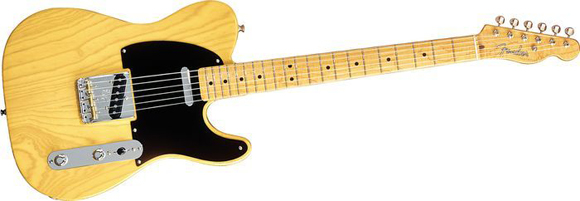
Fender Telecaster Electric Guitar
Fender Telecaster (stock): Roy Buchanan, James Burton, Steve Cropper, Muddy Waters, Joe Messina
Telecaster (modified): Mike Stern, Keith Richards, Danny Gatton, Clarence White
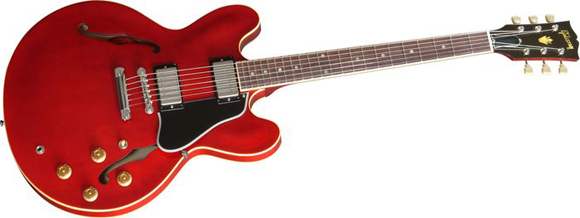
Gibson ES-335 Electric Guitar
Gibson ES-335: Larry Carlton, Dave Edmunds, Johnny “Guitar” Watson
Gibson ES-345: Freddie King, Alvin Lee, Elvin Bishop
Gibson ES-355: Chuck Berry, B.B. Kink, Keith Richards
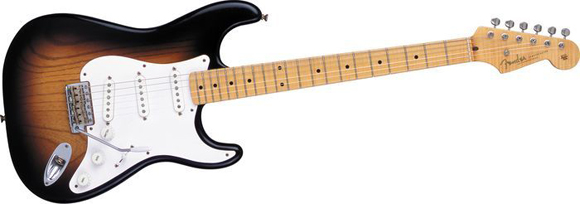
Fender Stratocaster Electric Guitar
Fender Stratocaster (stock): Buddy Holly, Jimi Hendrix, Jeff Beck, Mark Knophler, David Gilmour
Fender Stratocaster (modified): Hiram Bullock, Robbie Robertson, Adrian Belew, Stevie Ray Vaughn
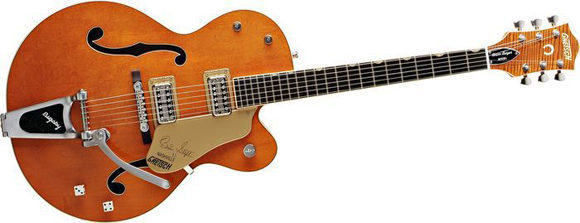
Gretsch 6120 Archtop Electric Guitar
Gretsch 6120: Brian Setzer, Chet Atkins, Eddie Cochran
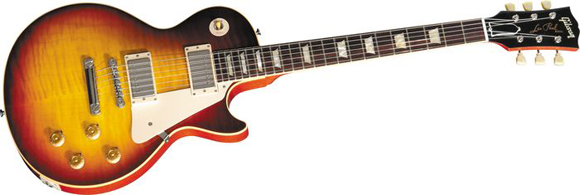
Gibson Les Paul Electric Guitar
Gibson Les Paul: Mike Bloomfield, Slash, Joe Perry, Duane Allman, Jimmy Page

Gibson Firebird Electric Guitar
Gibson Firebird: Johnny Winter, Eric Clapton, Howlin’ Wolf, Stevie Winwood, Pat Hare, Clarence Gatemouth Brown
Gibson Flying V: Albert King: Jimi Hendrix
Gibson Melody Maker: Joan Jett
Gibson Byrdland: Ted Nugent, Roy Clark, Eric Clapton

Gibson Les Paul Junior Electric Guitar
Gibson Les Paul Junior: Lesley West, John Lennon, Bob Marley, Johnny Thunders, Mick Jones
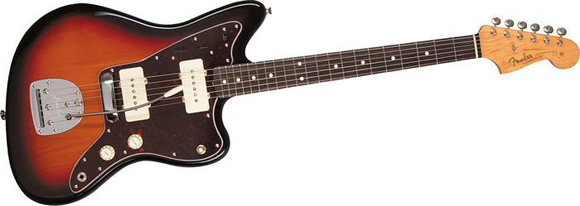
Fender Jazzmaster Electric Guitar
Fender Jazzmaster: Elvis Costello, Thurston Moore & Lee Ranaldo, Kevin Shields, J Mascis
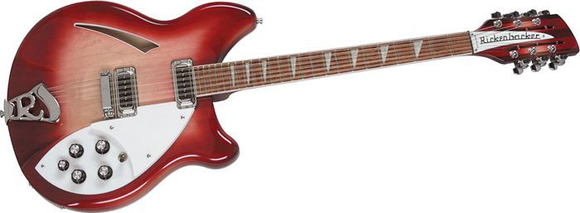
Rickenbacker 12-string Electric Guitar
Rickenbacker 12-string: George Harrison, Tom Petty, Roger McGuinn
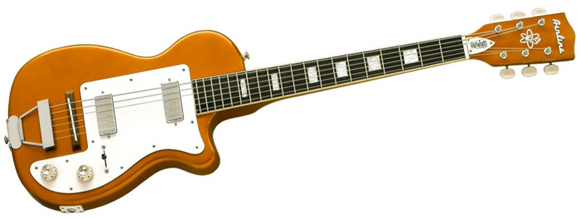
Airline H44 Electric Guitar
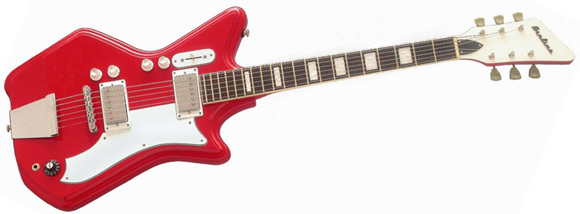
Airline Resoglas Electric Guitar
Airline/Supro Resoglas: J.B. Hutto, Jack White, PJ Harvey
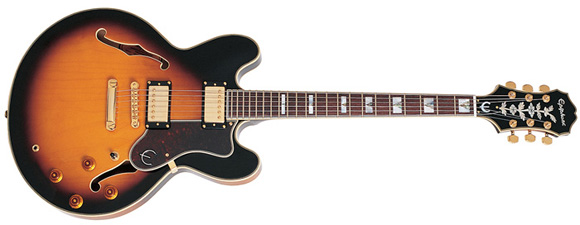
Epiphone Sheraton Electric Guitar
Epiphone Riviera/Sheraton: John Lennon, Otis Rush, George Harrison, John Lee Hooker
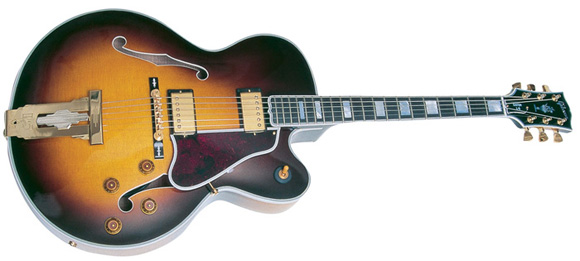
Gibson L5-CES Archtop Electric Guitar
Gibson L5-CES: Wes Montgomery, Scotty Moore, Paul Simon (L5S)
Other Notables:
- Gretsch Country Gentleman: George Harrison, Steven Stills, David Crosby
- Mosrite (several models): The Ventures, Joe Maphis, Rick Wilson (B-52’s), Johnny Ramone
- Silvertone/Danelectro: Jimmy Page, Link Wray, Hubert Sumlin, Elmore James, R.L. Burnside
- Kay Electrics: Jimmy Reed, Howlin Wolf, Lonnie Johnson
So if you are interested in getting a sound similar to any of these artists, a good place to start is with their guitar choices. I would say that may be 20% of it, the amplifier would be another 20% and the rest is technique, approach, and attitude.
There are some other aspects that would affect your sound, the type of picks you use, the gauge of your strings, and any effects you might use.
In my world I would say use as few effects as you can, I know they are part of the song, blah,blah blah. If you need a harmonic effect like a chorus but feel you need to flange at some point in the show get one of those multi units like the Line 6. And remember the more pedals you use the farther away are you from the sound of your guitar.
Now as far as the amps go, those of you who are familiar with my column know I am a traditionalist. As far as I can see there are three categories of amplifiers.
Clean Amps:
These amps are clean sounding, with plenty of headroom and eq to pick from. Twin Reverbs, Ampeg, and Lab Series amps are a few. Also some of the older Peavey solid state amps are real clean amps. You can always get a dirty sound with your favorite pedal if you need it.
Dirty Amps:
Marshall JCM 800 and 900 Series amps, many tweed Fenders, the 100 watt army of amps like Crate, Krank, Soldano, and Randall. These amps will give you the sound you are looking for, if that sound is a crunchy compressed full sound.
Channel switching amps:
These amps are for cats that need both clean and dirty and like the idea of the two sounds coming from the same amp. These amps are personified by Mesa Boogies, Rivera era Fenders, and combos like the Marshall TCM Series.
And remember folks – “got and questions?”..”go lean on Shell’s Answer Man”.

One guitar with artist you missed in the modified Telecaster category was Jeff Beck Yardbirds era. And then in the Eastwood guitars is Mark Farner with his Messenger. Of course there may be a few more but you did good.
Hi – was wondering why you made the distinction of ‘modified’ for some models and not for others? Eddie Cochran’s Gretsch had a retro-fitted P.90 on the neck. John Lennon’s LP Jnr had a Charlie Christian in the neck position.
Also, John & George played Epiphone Casinos (George’s with Bigsby). Not aware of them playing Sheratons.
*Pete Townshend!*
Many errors here. Lennon snd Harrison played Epi Casinos, not ever Sheratons or Rivieras. Crosby played a Gretsch Tennessean with the Byrds, not a Country Gent. Stills played a White Falcon – has his own signature Falcon. Don’t bother with these kindergarten information articles if you can’t even get the basics.
Ahahahah, Airline / Supro included and PRS forgotten…
Additionally, reading the list it looks like music stopped being produced 30 years ago
Cool article. However, Eric Clapton should have been mentioned as a Les Paul player–he was at least as influential as Bloomfield in getting other players using Les Pauls, certainly more so in the UK. He was also the first one to use the now-iconic setup of a Les Paul into a cranked Marshall. He is mentioned as a Byrdland player, but I don’t think he’s ever used a Byrdland. He did use an ES-350T, which is a less-fancy version of a Byrdland, for the Concert for Bangladesh, which was very visible, but he hasn’t used it much since. In the mid-’50’s, Chuck Berry also used an ES-350T. And Jeff Beck needs to be mentioned as a Tele player, as he used one (actually an Esquire) with the Yardbirds. Clapton needs to be included as a Strat player too, as does Dick Dale. And you can’t mention the Jazzmaster without mentioning the late great Bob Bogle of the Ventures.
There’s also a bit of misinformation as well for the Strats… Jimi Hendrix used a modified Strat: He had taken all of the strings off of a right-handed guitar, removed the nut, and replaced it with a lefty nut before restringing it again, because he was a Lefty.
That it seems almost just like the battle on the ages. A
set of good quality athletic shoes is the most powerful
item a sprinter can buy. It is specific cut that defines
the way the diamond reflects under supply of light. nike and Adidas
have also found a grip in this sub-market. http://www.tups4.
com/groups/choosing-nike-2012-form-of-hosting-work-for-business/
Missing a lot of great Jazzmaster players- Nels Cline, Thurston Moore, Lee Ranaldo, Kim Gordon, J. Mascis, Kevin Shields, Belinda Butcher, Tom Verlaine, Robert Smith…
Come on!! Elvis Costello?? Really?? What about Bob Bogle of The Ventures who played the jazzmaster for almost 50 years?? Even Fender recognized The Ventures with it’s own Ventures jazzmasters. THE best selling instrumental band of all time and inducted into the R & R hall of fame and no mention. Shame on you Joey Leone.
It prices nothing, and It has gotten me enough gems so that i
currently have 5 builders and over 1,000 gems.
What about Steve Howe and his Gibson ES-175, a classic combination that created the amazing Steve Howe sound.
I have a signed guitar from the great Bugs Henderson what can you tell me about his guitar and i want to sell it how much would it be worth to a collector?
Billie Joe Armstrong played a Gibson SG
buddy what the hell kind of guitar do u think Eddie Van Halen played. if u need a hint there is a brand called Eddie Van Halen
Eric Clapton started the Les Paul craze with his playing on the first John Mayall album and the first Cream album.